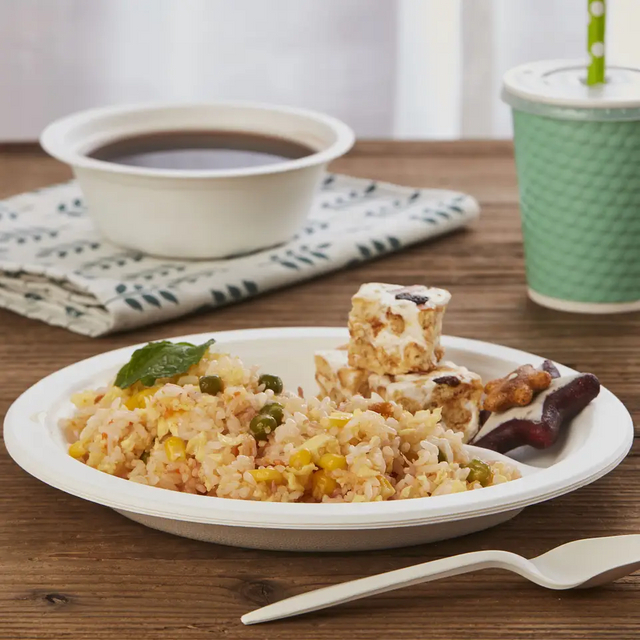+86-136-0073-8328 nancy.huang@geotegrity.com
- All
- Product Name
- Product Keyword
- Product Model
- Product Summary
- Product Description
- Multi Field Search
Views: 167 Author: Site Editor Publish Time: 2025-05-28 Origin: Site








In recent years, the global conversation surrounding climate change, environmental degradation, and sustainable living has intensified. As plastic pollution continues to wreak havoc on marine ecosystems and landfill sites overflow with non-biodegradable waste, industries are under pressure to adopt more environmentally responsible practices. One of the most promising innovations in this movement is bagasse tableware—a product derived from the leftover fibers of sugarcane after juice extraction. These biodegradable and compostable products are not just a green alternative but a comprehensive solution to a growing global crisis.
Bagasse tableware is increasingly used in food service sectors across the globe. Thanks to advancements in bagasse tableware machine and sugarcane bagasse tableware making machine technologies, manufacturers can now efficiently produce a wide variety of disposable products such as plates, bowls, trays, and clamshells. In this article, we’ll explore why bagasse tableware is quickly becoming the future of eco-friendly packaging solutions, backed by data, industrial trends, and FAQs.
Bagasse is the dry fibrous residue left after extracting juice from sugarcane. Traditionally discarded or burned as agricultural waste, bagasse is now being repurposed into a valuable raw material for biodegradable bagasse tableware.
The production process involves several key steps:
Pulping: Bagasse is cleaned and mixed with water to create pulp.
Molding: Using high-temperature bagasse tableware making machines, the pulp is molded into desired shapes like plates or containers.
Drying and Sterilization: Products are dried and treated for hygiene and durability.
Finishing: Final touches such as trimming and quality control are performed.
Thanks to the evolution of sugarcane bagasse tableware making machines, the production process is not only efficient but also energy-conscious. As a result, bagasse tableware manufacturers can meet the rising global demand without compromising sustainability goals.
When comparing bagasse tableware products to plastic, foam, or even paper-based packaging, the differences are significant. Here's a comparison chart:
| Feature | Bagasse Tableware | Plastic Tableware | Paper Tableware |
|---|---|---|---|
| Biodegradability | Yes (90–180 days) | No | Partial |
| Compostability | Yes | No | Partial |
| Microwave Safe | Yes | No | Sometimes |
| Water & Oil Resistant | Yes | Yes | No |
| Raw Material Source | Agricultural Waste | Petroleum | Trees |
Unlike traditional plastic, sugarcane bagasse disposable tableware breaks down naturally, without releasing toxic chemicals. Additionally, its production has a significantly lower carbon footprint, especially when using energy-efficient bagasse tableware machines.

The bagasse tableware products market is witnessing exponential growth. Several factors contribute to this rise:
Legislative pressure: Governments are banning single-use plastics.
Consumer awareness: Increasing demand for eco-conscious products.
Corporate responsibility: Businesses adopting green packaging to align with ESG goals.
China, in particular, is emerging as a dominant player in this market. Many China bagasse tableware manufacturers are investing heavily in automated bagasse tableware machines and sustainable production lines. The ability to scale operations and offer wholesale sugarcane bagasse tableware has positioned China as a global supplier.
Analysts predict the global bagasse tableware market to grow at a CAGR of over 6% in the next five years. This growth is largely driven by food delivery services, hospitality, and eco-conscious retail brands seeking bulk packaging alternatives.
Turning agricultural waste into tableware might sound like alchemy, but it’s a scientifically grounded process that delivers remarkable environmental benefits:
Waste Utilization: Instead of burning sugarcane waste, it’s repurposed for useful products.
Reduced Carbon Emissions: Manufacturing bagasse products consumes less energy than plastic production.
No Deforestation: Unlike paper tableware, bagasse doesn’t contribute to tree loss.
Soil Enrichment: Compostable sugarcane bagasse tableware can be used to enrich soil post-degradation.
These benefits make bagasse tableware a perfect model for a circular economy, where materials are reused and recycled rather than discarded.
Despite its many advantages, producing bagasse tableware at scale comes with challenges:
Machinery Costs: High-quality bagasse tableware machines and sugarcane bagasse tableware making machines are expensive.
Raw Material Availability: Limited to sugarcane-producing regions, creating supply chain constraints.
Regulatory Compliance: Strict hygiene and food-grade certifications must be met.
However, leading bagasse tableware manufacturers are finding innovative ways to overcome these obstacles. Collaborative farming initiatives, automation, and material blending are making bagasse-based solutions more accessible and affordable.

Q1: Is bagasse tableware truly biodegradable?
Yes. Bagasse tableware typically decomposes within 90 to 180 days under composting conditions.
Q2: Can I microwave sugarcane bagasse disposable tableware?
Absolutely. These products are microwave and freezer safe, making them ideal for both hot and cold foods.
Q3: Are there wholesale options for sugarcane bagasse tableware?
Yes. Many bagasse tableware manufacturers, especially in China, offer wholesale sugarcane bagasse tableware for global markets.
Q4: What’s the lifespan of a bagasse tableware machine?
With proper maintenance, most bagasse tableware machines have a life span of 10–15 years.
Q5: Is bagasse tableware expensive compared to plastic?
Currently, prices are slightly higher but falling as demand increases and technology improves. In bulk, prices are competitive, especially for wholesale sugarcane bagasse tableware.
The transition to bagasse tableware is not just a trend—it’s a necessity. As the world grapples with the consequences of unsustainable consumption, biodegradable alternatives offer a path forward. Backed by strong environmental credentials, cutting-edge bagasse tableware making machines, and a growing base of committed bagasse tableware manufacturers, the industry is poised for massive growth.
Whether you're a restaurateur looking to reduce your carbon footprint, a supplier exploring wholesale sugarcane bagasse tableware, or simply an eco-conscious consumer, the message is clear: Bagasse tableware is the future of eco-friendly packaging solutions.